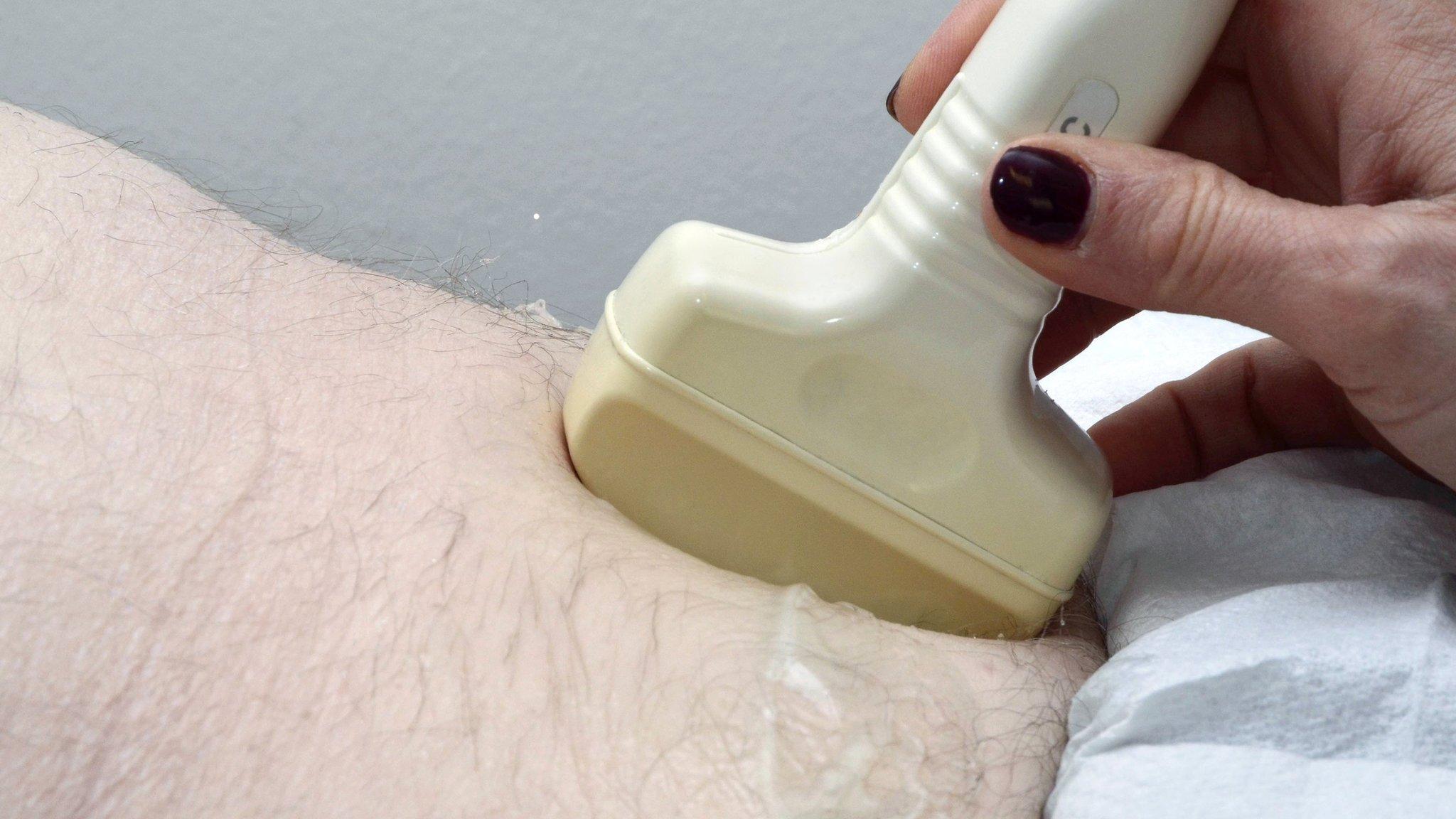'Concern' as study highlights aneurysm death rate
- Published

The death rate from abdominal aortic aneurysms is more than three times higher in England than in the US, analysis of official data shows.
The weakening and swelling of the main blood vessel from the heart is normally fatal if it bursts.
A study published in the New England Journal of Medicine, external, raised "concern" that English surgeons may be performing preventative operations less often.
Experts say the issue should be investigated further.
The aorta is normally 2 cm across and international guidelines suggest considering surgery once an aneurysm grows to 5.5 cm in men or 5 cm in women.
They cause massive internal bleeding if they burst.
Surgeons can either perform keyhole surgery to line the aorta with stents or perform open surgery to replace the aneurysm with a graft.
Both procedures come with risks.
Teams from Harvard Medical School and St George's, University of London, analysed official national data on aneurysms in the US and England between 2005 and 2012. While the data analysed was only from England, the research team believe their findings apply across the UK.
The death rate from aneurysms fell in both countries over the period.
And in 2012 it stood at 34 per 100,000 people per year in England in 2012 and at nine per 100,000 people per year in the US.
On average it was three-and-a-half times higher in England.
Meanwhile, the rate of aneurysm repair in England was half that of the US and those that were performed took place when the aneurysm had reached a larger size.
The average size was 5.83 cm in the US and 6.37 cm in England.
'Not definitive proof'
Dr Alan Karthikesalingam, from St George's, told the BBC News website: "This is not something we knew was happening.
"From an English perspective it raises a series of questions about what we do in response."
He was clear that the study is not definitive proof that doctors in England have got it wrong, but there "may be room for improvement".
He said: "It is a concerning observation. The problem is our study does not conclusively prove that the lower operation rate in England is the only cause of the higher number of aneurysm deaths."
One of the challenges is it is impossible to fully account for all the differences between the English and US healthcare systems, when people are tested and the health of the populaces which may also affect the findings.
The UK began introducing a screening programme for aneurysms in 2009.
Dr Karthikesalingam said there needed to be more research to determine if doctors should perform preventative operations on smaller aneurysms.
The Vascular Society of Great Britain and Ireland said: "Further trials are required to determine the safe threshold for abdominal aortic aneurysm management in the UK."
Meanwhile, Matt Bown, a professor of vascular surgery at the University of Leicester, said: "These findings do not support an immediate change in clinical practice, but do suggest that more research is needed to explain the variation in aneurysm death rates between the US and the UK.
"Currently, there is no evidence to suggest that patients with an abdominal aortic aneurysm should be offered surgery if it is less than 5.5cm.
"My current British Heart Foundation-funded research aims to help us understand more about how abdominal aortic aneurysms progress and the risk of rupture, and could help us identify people whose aneurysms grow faster and are at greater risk."
Follow James on Twitter., external
- Published6 January 2016

- Published17 February 2015

- Published27 November 2012
